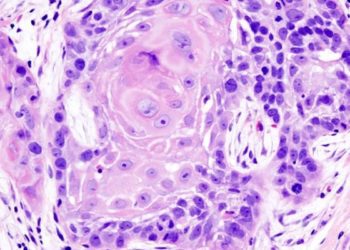Parental smoking associated with smoking behavior in adolescence
Image: PD
1. Adolescents exposed to parents who smoked in any form had greater probability of being regular smokers themselves.
2. The longer that adolescents were exposed to parental smoking behavior the greater the odds that they would experiment early with smoking or be regular smokers.
Evidence Rating Level: 1 (Excellent)
Study Rundown: Previous research has shown that parental smoking behavior is transmissible to children, but little is known about the actual mechanism. Authors of the current study evaluated the prospective relationship between adolescent exposure to parental smoking and the subsequent development of smoking during adolescence and into early adulthood. Researchers found that children exposed to any form of parental smoking were more likely to experiment early with smoking or to be regular smokers. Longer adolescent exposure was associated with greater likelihood to develop stronger smoking habits. Exposure to parents who were previously smokers, but no longer actively smoke, did not affect adolescent smoking status. These findings add to previous research about smoking transfer from parents to children, but the study may be limited by self-report data collection, lack of control for multiple risk factors including peer smoking, and the assessment of parental smoking status solely at baseline. This study encourages physicians to screen and counsel smoking parents and their children about cigarette use, and refer them to evidence-based cessation resources.
Click to read the study, published today in Pediatrics
Relevant Reading: Parental smoking and adolescent smoking initiation: An intergenerational perspective on tobacco control
In-Depth [prospective cohort study]: This study consisted of second and third generation participants from the New England Family Study. A total of 406 adolescents, ages 12-17 (mean age = 14.2 + 1.6 years, 52% female, 86% white) were included. Participants and their parents completed separate baseline interviews, and adolescents were interviewed again a year later. A third interview was conducted 5 years after the start of the study for participants who were 18 years or older. During each interview, the Lifetime Inventory of Smoking Trajectory, a previously validated instrument, was used to assess adolescent and parental smoking history. All participants and parents were assessed for nicotine dependence. Participants were divided into four trajectory classes: early regular smokers (smoked regularly at baseline), early experimenters (tried or smoked nondaily at baseline and year 2), late experimenters (tried smoking later after baseline), and nonsmokers. Adolescents with parents who were current, nicotine-dependent smokers had significantly greater odds of being early regular smokers than those without smoking parents (OR 9.67, 95% CI 1.66-50.67). Each year of exposure to parents who were nicotine-dependent smokers increased the likelihood that adolescents would become an early regular smoker (OR 1.18, 95% CI 1.05-1.33).
More from this author: Food advergames linked to increased caloric intake in children, Potential association between toddler behavior and infant media exposure, ADHD stimulant treatment associated with changes in BMI trajectory, Current BMI standards may be predictive of metabolic syndrome, Increased cognitive activity post-concussion associated with prolonged symptom duration
©2012-2014 2minutemedicine.com. All rights reserved. No works may be reproduced without expressed written consent from 2minutemedicine.com. Disclaimer: We present factual information directly from peer reviewed medical journals. No post should be construed as medical advice and is not intended as such by the authors, editors, staff or by 2minutemedicine.com. PLEASE SEE A HEALTHCARE PROVIDER IN YOUR AREA IF YOU SEEK MEDICAL ADVICE OF ANY SORT.





